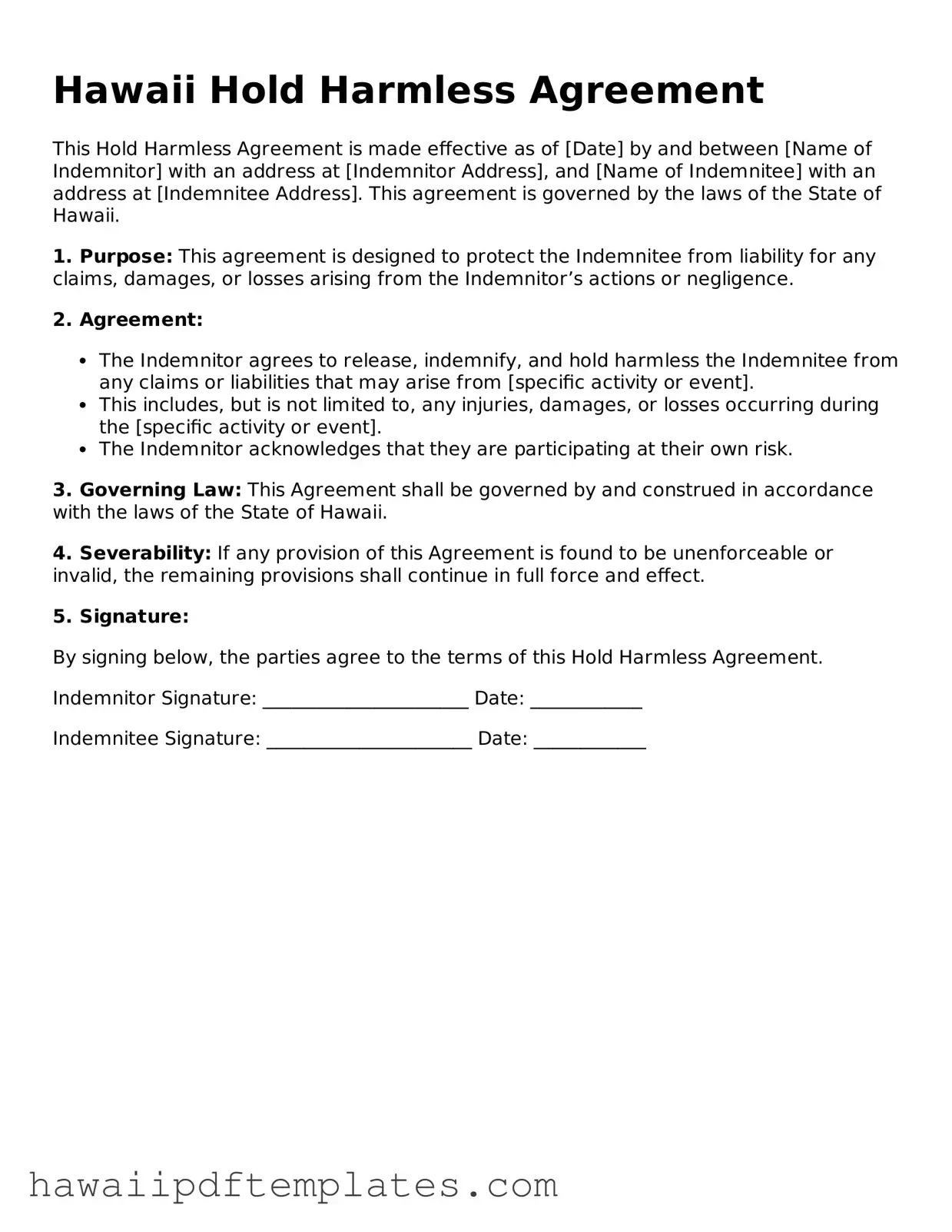Free Hold Harmless Agreement Document for Hawaii State
The Hawaii Hold Harmless Agreement is a legal document that protects one party from liability for any damages or injuries that may occur during a specific activity or event. This agreement is often used in various situations, such as rental agreements, events, or construction projects, ensuring that one party will not hold the other responsible for unforeseen incidents. Understanding this form is crucial for anyone looking to engage in activities that carry potential risks.
To fill out the form, please click the button below.
Customize Form Online
